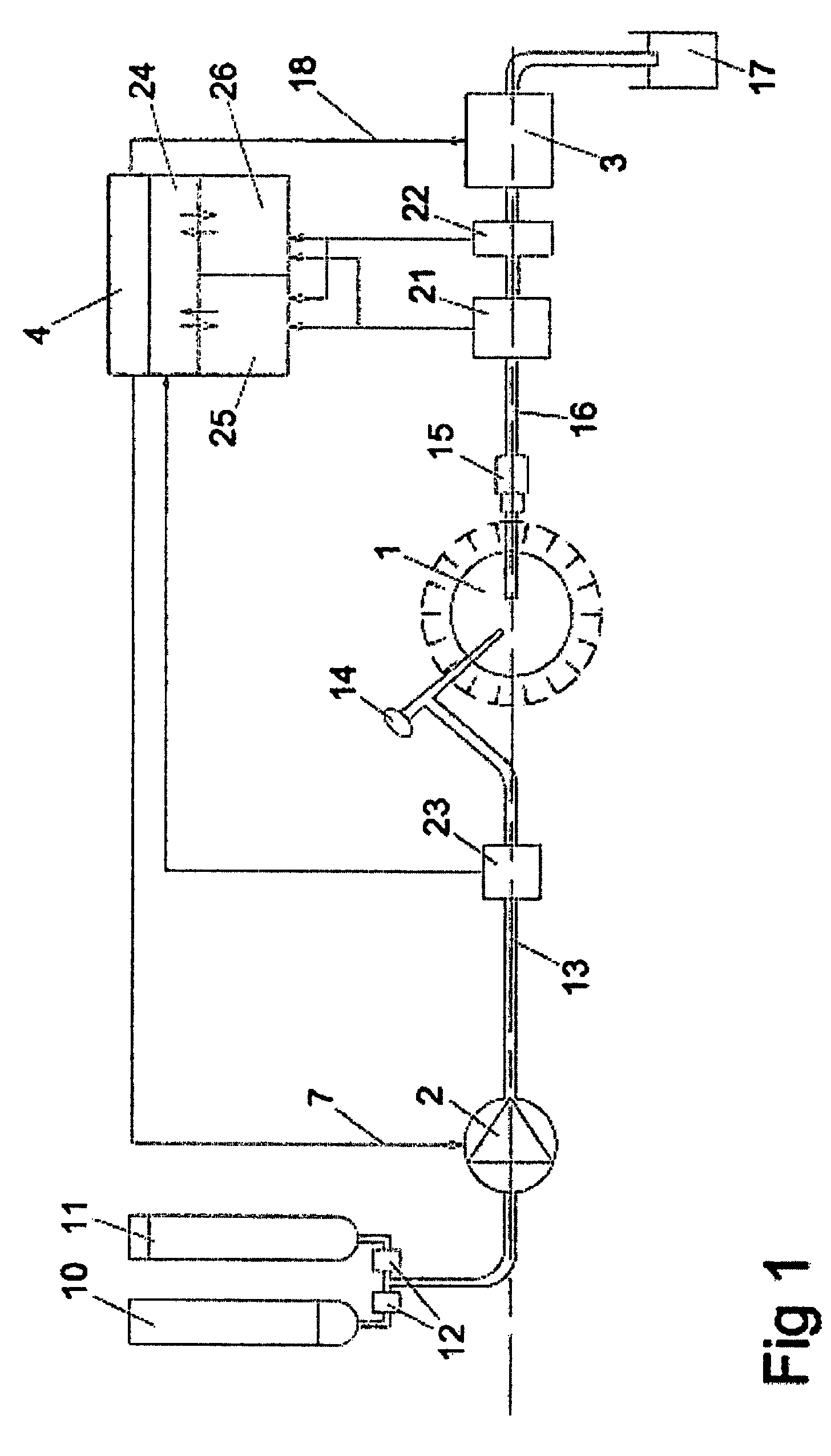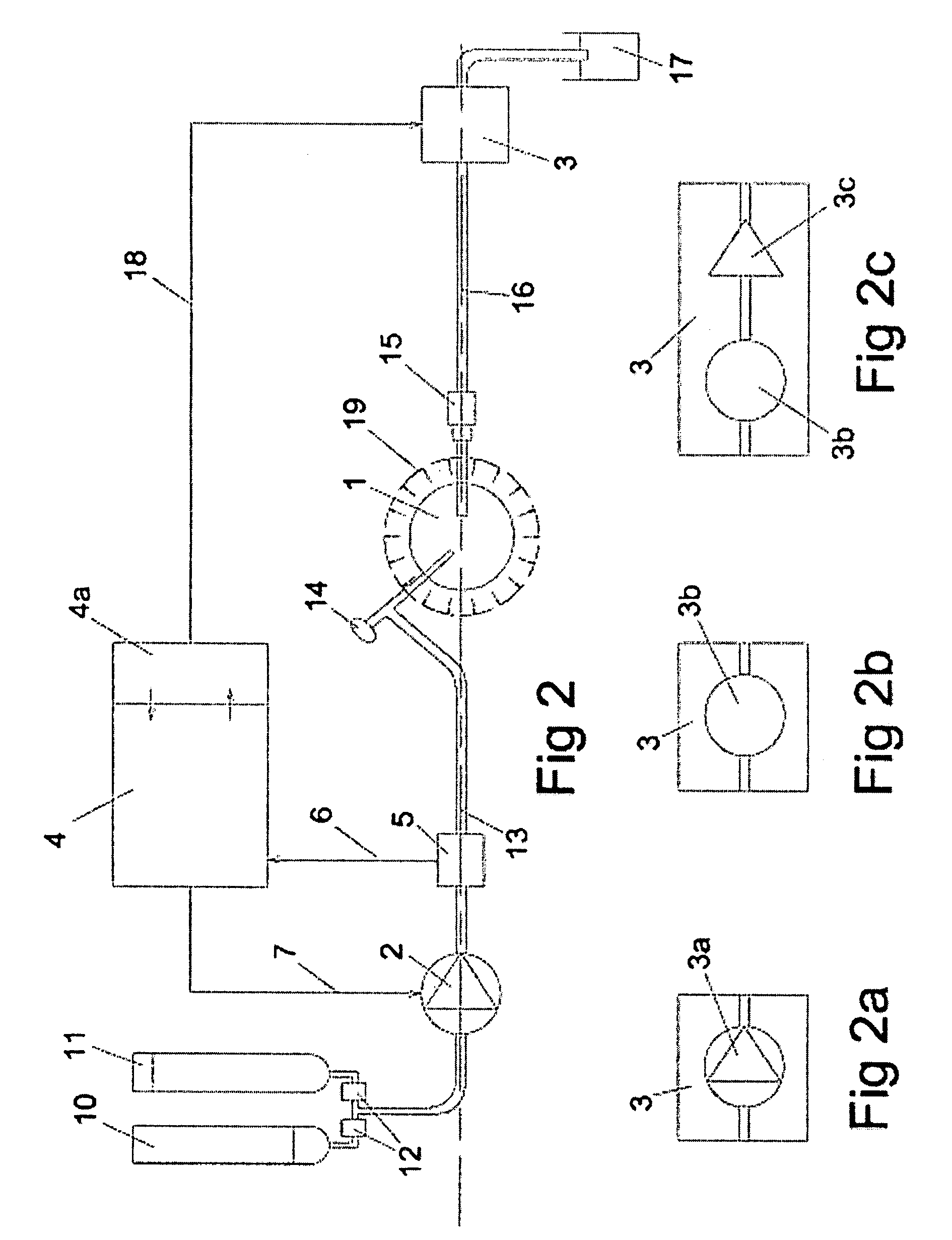Method and device for irrigation of body cavities
a body cavity and irrigation method technology, applied in the field of endoscopic surgery, can solve the problems of resistance reconfirmation and loss of pressure in the system, and achieve the effects of increasing the flow through the body cavity, increasing the flow rate, and keeping the liquid clear
- Summary
- Abstract
- Description
- Claims
- Application Information
AI Technical Summary
Benefits of technology
Problems solved by technology
Method used
Image
Examples
example 1
Smart Vision / LED
[0077]Below is an example of a technique to detect and distinguish blood and debris in the liquid that is aspirated from a knee joint during an arthroscopic procedure while using an irrigation system for body cavities. Signals from this detection is used to control the pressure in, and liquid flow through the knee joint in a manner that keeps it clear from blood and debris for good viewing with the arthroscope. If debris is detected, the flow through the knee joint is automatically elevated to efficiently rinse it. If blood is detected, the pressure is also automatically elevated, to inhibit blood from leaving the broken vessels, by overcoming the blood pressure.
[0078]Work is performed in the knee with surgical tools such as forceps, scissors, rotating burrs and drills. Various forceps are used to detach tissue, and as a result some of this tissue will float in the liquid in the surgical site. These particles of tissue may be of bone, cartilage, small tissue fragment...
example 2
Detached Sensors
[0088]Fitting the optical sensors (21, 22) on a blood vessel near to, directly adjacent to the surgical instrumentation, or even within the surgical instrumentation is advantageous, as the reaction time as the debris and / or blood leaves the surgical site and as it reaches the optical sensors is reduced. This can be accomplished by use of a cable or wireless detector and a battery operated detector with wireless data transfer. The detector can be fitted on the cannula where the liquid normally is withdrawn from the surgical site as shown in the example in FIG. 14. In this example, wires (36) are used to connect the sensors to the operating control device (27). If the detector is fitted on or within the housing of a shaver, the wiring for the optical detector may be enclosed in the cable for the shaver.
example 3
Detached Sensing
[0089]As shown in the example in FIG. 15, the optical sensors (21, 22) can be fitted in the operating control device (27), but the detection is made within the surgical instrumentation. Instead of electrically connecting the optical sensors to the operating control device (27), they are optically be connected to the surgical instrumentation by use of optical fibres (37).
PUM
 Login to View More
Login to View More Abstract
Description
Claims
Application Information
 Login to View More
Login to View More - R&D
- Intellectual Property
- Life Sciences
- Materials
- Tech Scout
- Unparalleled Data Quality
- Higher Quality Content
- 60% Fewer Hallucinations
Browse by: Latest US Patents, China's latest patents, Technical Efficacy Thesaurus, Application Domain, Technology Topic, Popular Technical Reports.
© 2025 PatSnap. All rights reserved.Legal|Privacy policy|Modern Slavery Act Transparency Statement|Sitemap|About US| Contact US: help@patsnap.com



